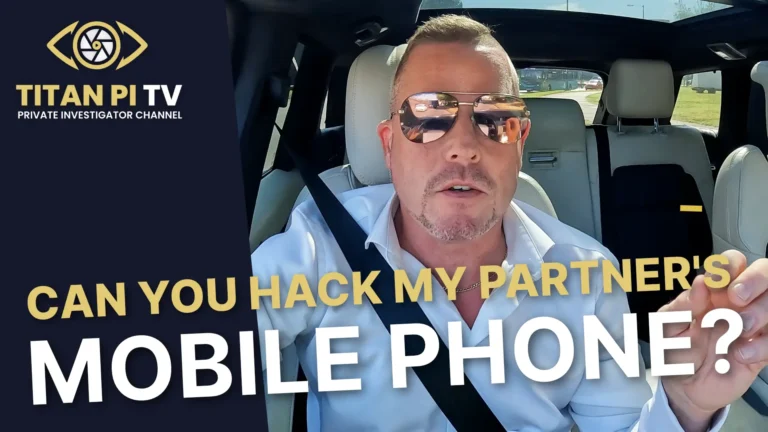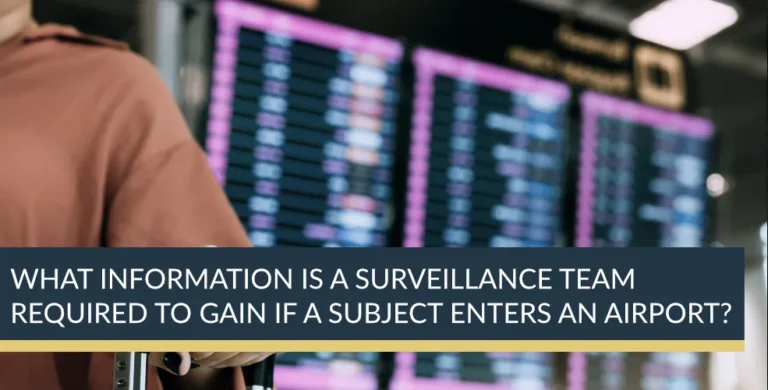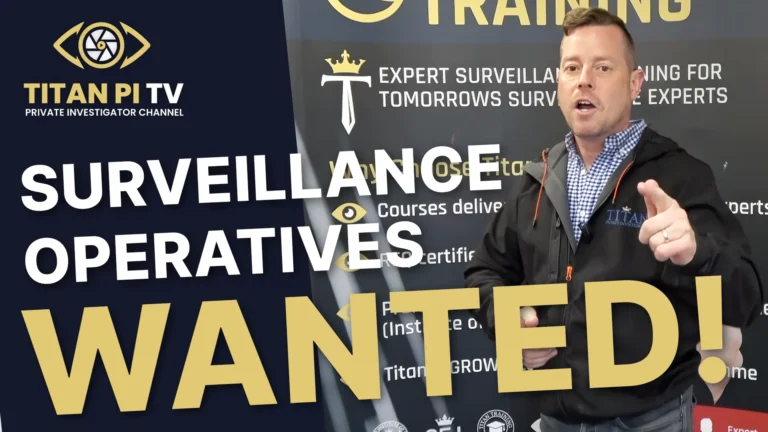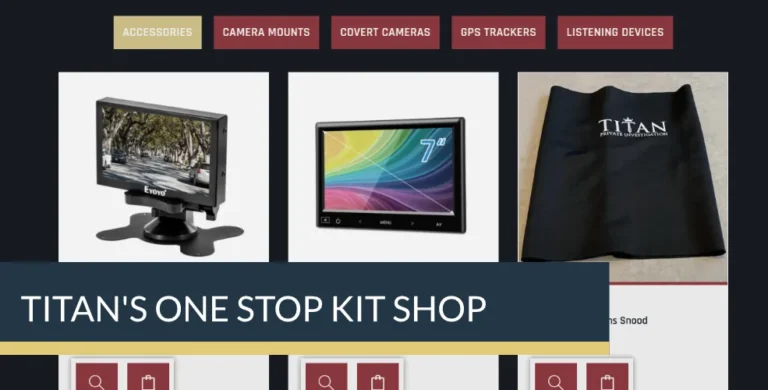Can the Police Bug Your House, Monitor Your Calls and Texts?
Simon Henson Explains the Truth Behind Surveillance in the UK
In the latest episode of Titan PI TV, Simon Henson, Managing Director of Titan Private Investigation Limited, delves into one of the most pressing questions in modern British society: can the police legally bug your house, monitor your phone calls, and intercept your text messages? With the rise of digital technology and increasing concerns about privacy, this episode offers a rare, behind-the-scenes look at the legal frameworks and real-world operations that govern police surveillance in England and Wales.
The Legal Framework: The Regulation of Investigatory Powers Act (RIPA)
At the heart of the episode is the Regulation of Investigatory Powers Act 2000, commonly referred to as RIPA. This legislation, Henson explains, is the cornerstone of lawful surveillance in the UK. It sets out the circumstances under which law enforcement agencies can intercept communications and conduct covert operations.
“If the police want to listen to your mobile phone calls or intercept your texts, then this is Part 1 of the RIPA Act,” Henson states. “This has to be authorised by the Secretary of State, so very high up to be able to get this authority. And they will only be able to do it if they suspect that you’re involved in serious crime or you pose a threat to national security, such as counter-terrorism.”
The same stringent requirements apply to the bugging of private residences, which falls under Part 2 of RIPA. This is classified as “intrusive surveillance” and, again, requires authorisation at the highest levels of government. The message is clear: while the police do have significant powers, these are tightly regulated and reserved for the most serious cases.
Real-World Application: A Detective’s Perspective
To illustrate how these powers are used in practice, Henson draws on his own experience as a Detective Sergeant. He recounts a high-stakes investigation into a spate of cash-in-transit robberies—a case that perfectly exemplifies the intersection of law, technology, and operational risk.
The suspects, Henson explains, were believed to be orchestrating a series of violent robberies targeting cash deliveries. Their modus operandi was both brazen and dangerous: they would surveil cash-in-transit vehicles, don balaclavas, and use viable firearms to threaten or injure security guards before making off with boxes containing tens of thousands of pounds.
“In this case, we used both Part 1 and Part 2 of RIPA,” Henson reveals. “We had bugs in the houses of the individuals we suspected of this serious crime. We also monitored their phones, listening to live intelligence from the phone lines to make decisions on the ground.”
The Operation Unfolds: Surveillance in Action
The operation was a masterclass in coordinated surveillance. With authorisation secured, the team installed covert listening devices in the suspects’ homes and tapped their phone lines. The intelligence gathered was both immediate and actionable.
“We gained intelligence from both the bug device, which was in the property, and also through monitoring texts and telephone calls,” Henson says. “We learned that the group had stolen a car and hidden it in council garages, fitted with false plates.”
Armed with this information, the team moved in during the early hours, accompanied by a locksmith and equipped with an endoscope to peer into the garages. Their efforts paid off: they located the stolen Mini, confirmed the mismatched plates, and installed a tracking device—another form of intrusive surveillance permitted under RIPA.
The Tension Mounts: From Surveillance to Intervention
The next morning, the tracker signalled that the stolen vehicle was on the move. The team sprang into action, donning body armour and arming themselves with a range of weapons, from pistols and rifles to less-lethal options like Tasers and incapacitant spray.
“We then got a surveillance around the vehicle using the technical, and we were able to locate the vehicle,” Henson recounts. “We followed it around the city, and then, lo and behold, it parked up in a pub car park opposite a NatWest Bank, where a cash-in-transit delivery was taking place.”
As the suspects donned their balaclavas, it became clear that a robbery was imminent. However, the Gold Commander—typically the Chief Constable—made a critical decision to avoid a potentially deadly confrontation in a public place. Instead, a marked police car was sent through the area with lights and sirens, spooking the suspects and preventing the robbery.
The Arrest: Bringing the Operation to a Close
The operation did not end there. The team covertly followed the suspects as they left the scene, eventually executing a “hard stop”—a high-risk manoeuvre involving multiple vehicles to box in the suspects and force them to a halt.
“We ran the front head-on, airbags all going off, and then got a vehicle at the rear and the two sides. Then it’s an armed stop. Arrested. Once again, tea and medals,” Henson says with a wry smile, capturing both the tension and the camaraderie of police work.
Lessons Learned: The Balance Between Security and Privacy
This case study, as Henson emphasises, demonstrates the power and necessity of lawful surveillance in tackling serious crime. However, it also underscores the rigorous safeguards in place to protect individual privacy.
“The Regulation of Investigatory Powers Act is there to ensure that these powers are not abused,” Henson notes. “Authorisation must come from the highest levels, and there must be a clear and present risk—either serious crime or a threat to national security.”
For the average citizen, this means that the police cannot simply bug your house or monitor your communications on a whim. The process is complex, the oversight is robust, and the consequences for misuse are severe.
The Broader Context: Surveillance in the Digital Age
The episode arrives at a time when public debate about surveillance and privacy is more intense than ever. With advances in technology making it easier to monitor communications, concerns about government overreach and the erosion of civil liberties are widespread.
Yet, as Henson’s account makes clear, surveillance remains an essential tool in the fight against organised crime and terrorism. The challenge for lawmakers, law enforcement, and society at large is to strike the right balance—empowering the police to protect the public while safeguarding the fundamental rights of individuals.
Titan PI TV: Informing and Engaging the Public
As the episode draws to a close, Henson encourages viewers to engage with the channel, subscribe for future episodes, and stay informed about the realities of investigation and surveillance in the UK.
“Hope you enjoyed that. Please give us a thumbs up. If you don’t want to miss further episodes, please subscribe to the channel—it’s free. Till next time, thank you for listening, stay safe,” he signs off, reinforcing Titan PI TV’s commitment to transparency and public education.
Conclusion: Knowledge is Power
In an era of uncertainty and rapid technological change, understanding the laws and practices that govern surveillance is more important than ever. Thanks to experts like Simon Henson and platforms like Titan PI TV, the public can gain a clearer, more nuanced view of how the police operate—and what safeguards exist to protect our rights.
Whether you are concerned about privacy, interested in law enforcement, or simply curious about the world of private investigation, this episode offers valuable insights and a compelling real-life narrative. As Simon’s story shows, the line between security and liberty is not always easy to draw—but with the right checks and balances, it is possible to protect both.
What’s Next on Titan PI TV?
Thank you for reading, watching or listening to this week’s blog post on Titan PI TV. If you found this information helpful, please give us a thumbs up and subscribe to our channel. Stay tuned for more insights into the world of private investigations. Until next time, stay safe and keep learning!
Titan PI TV: Uncovering the Truth, One Investigation at a Time.




















